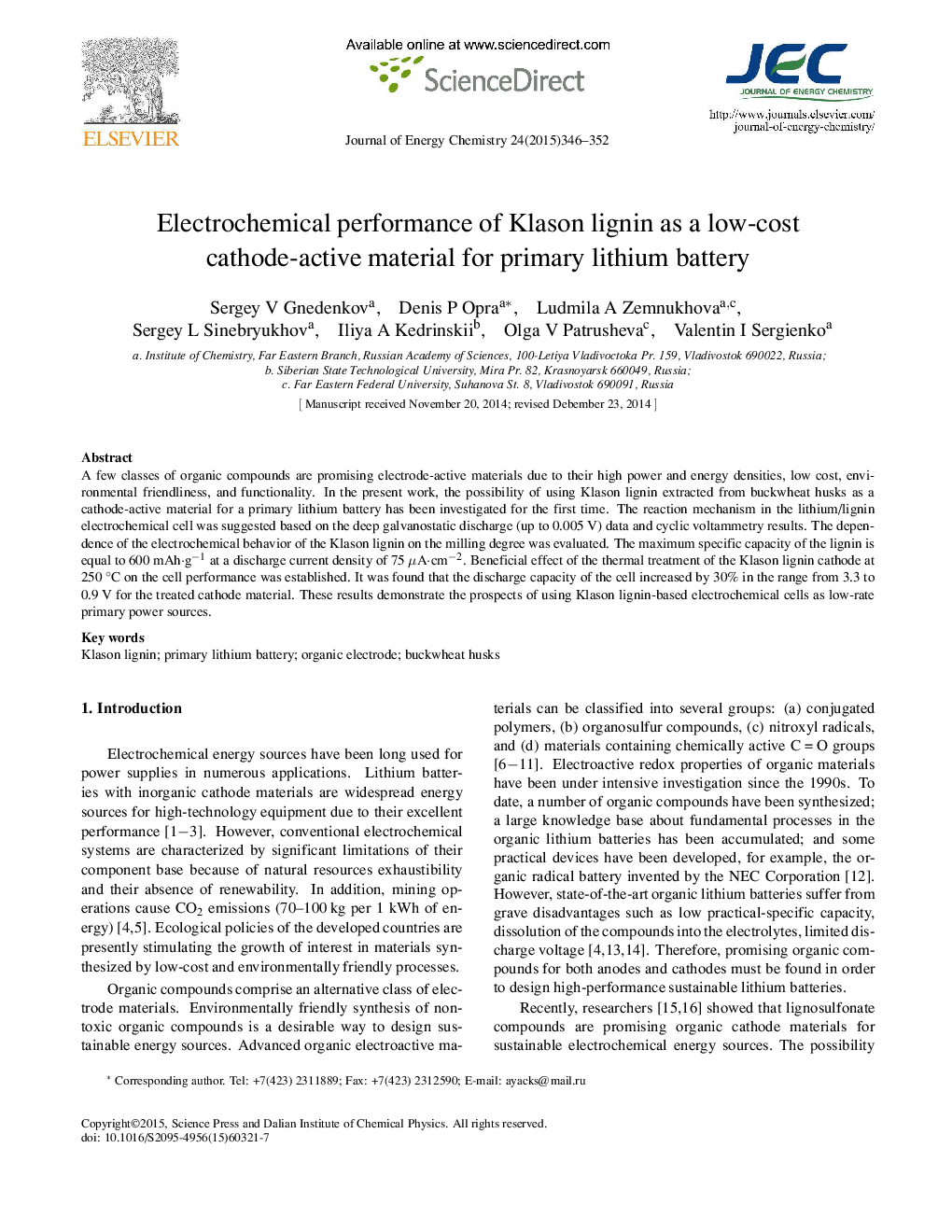| Article ID | Journal | Published Year | Pages | File Type |
|---|---|---|---|---|
| 63743 | Journal of Energy Chemistry | 2015 | 7 Pages |
A few classes of organic compounds are promising electrode-active materials due to their high power and energy densities, low cost, environmental friendliness, and functionality. In the present work, the possibility of using Klason lignin extracted from buckwheat husks as a cathode-active material for a primary lithium battery has been investigated for the first time. The reaction mechanism in the lithium/lignin electrochemical cell was suggested based on the deep galvanostatic discharge (up to 0.005 V) data and cyclic voltammetry results. The dependence of the electrochemical behavior of the Klason lignin on the milling degree was evaluated. The maximum specific capacity of the lignin is equal to 600 mAh·g−1 at a discharge current density of 75 μA·cm−2. Beneficial effect of the thermal treatment of the Klason lignin cathode at 250 °C on the cell performance was established. It was found that the discharge capacity of the cell increased by 30% in the range from 3.3 to 0.9 V for the treated cathode material. These results demonstrate the prospects of using Klason lignin-based electrochemical cells as low-rate primary power sources.
Heterogeneous morphology surface corresponds to KL particles. Step-by-step electrochemical reactions between Li+ and lignin functional groups are observed. The anode region of CV shows no peaks due to the irreversibility of the processes.Figure optionsDownload full-size imageDownload as PowerPoint slide
